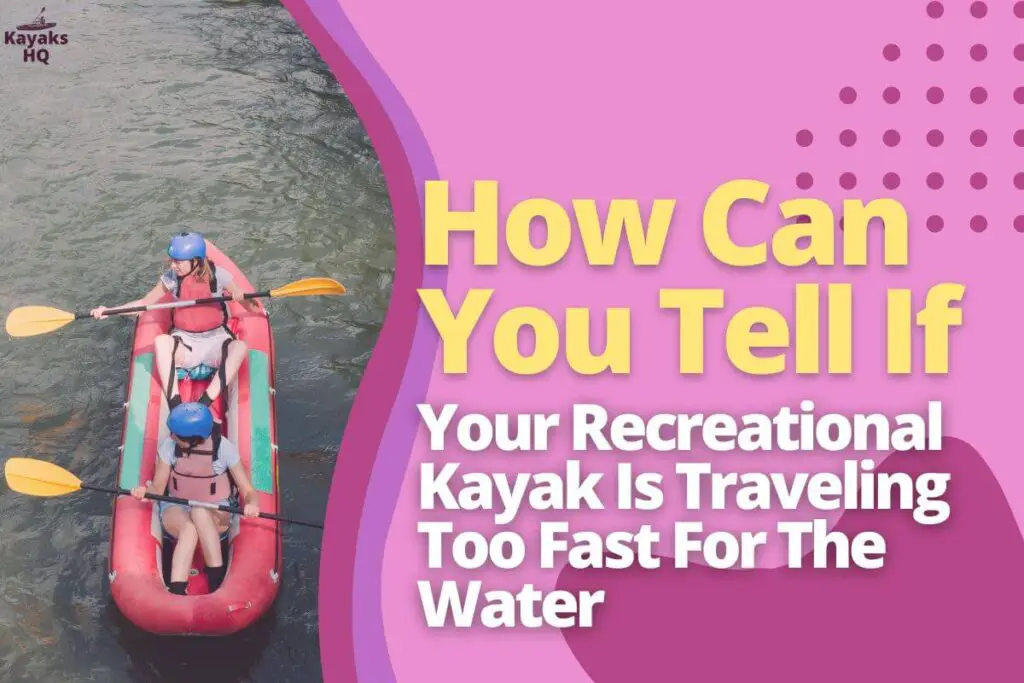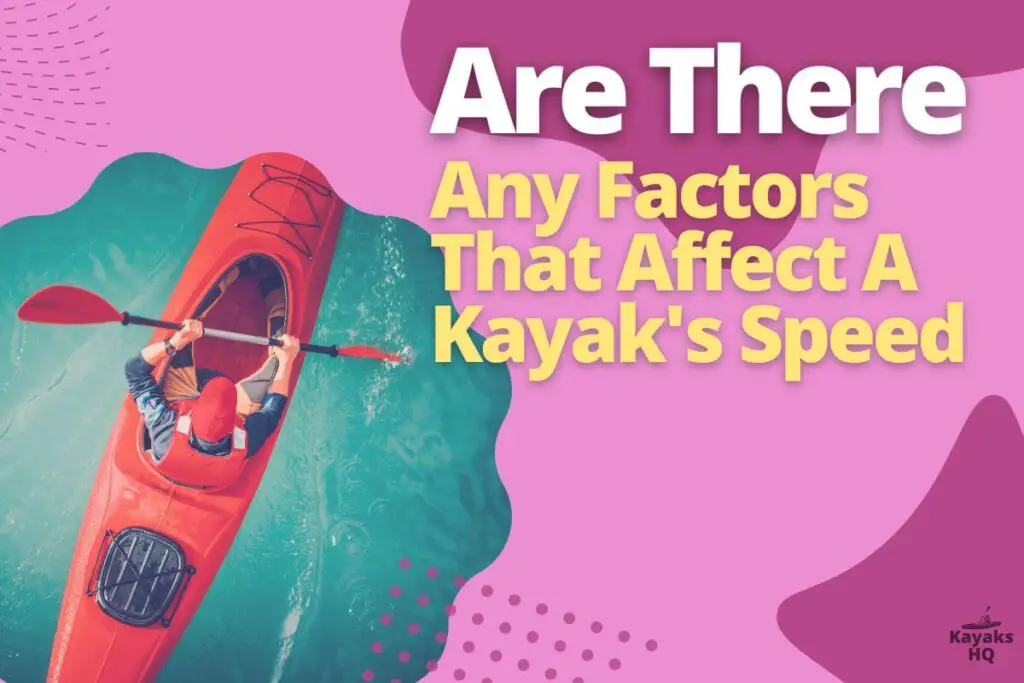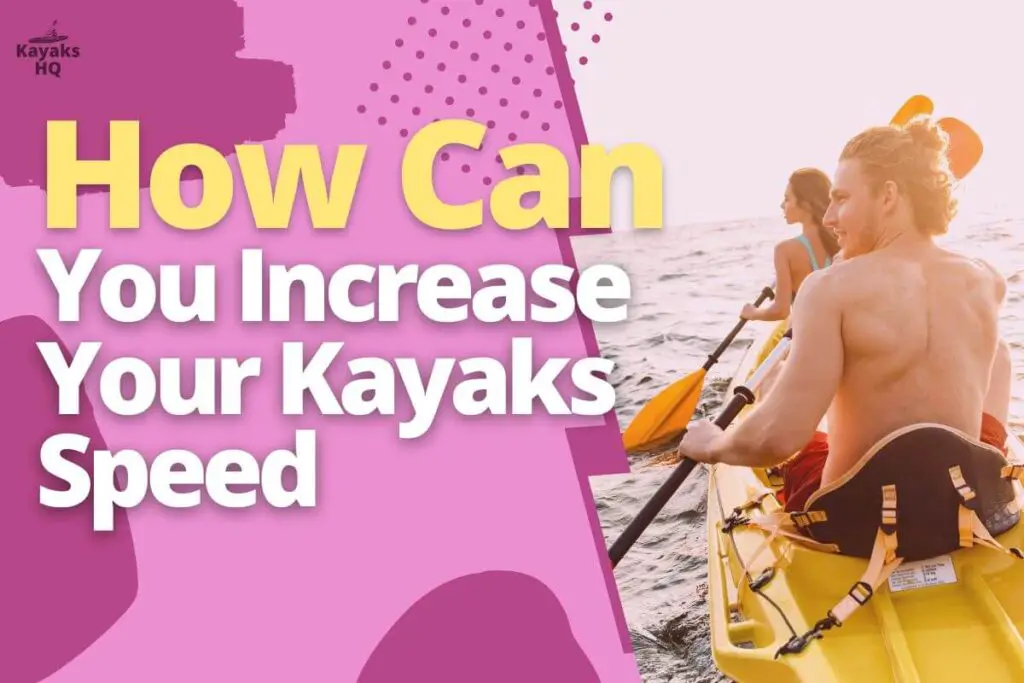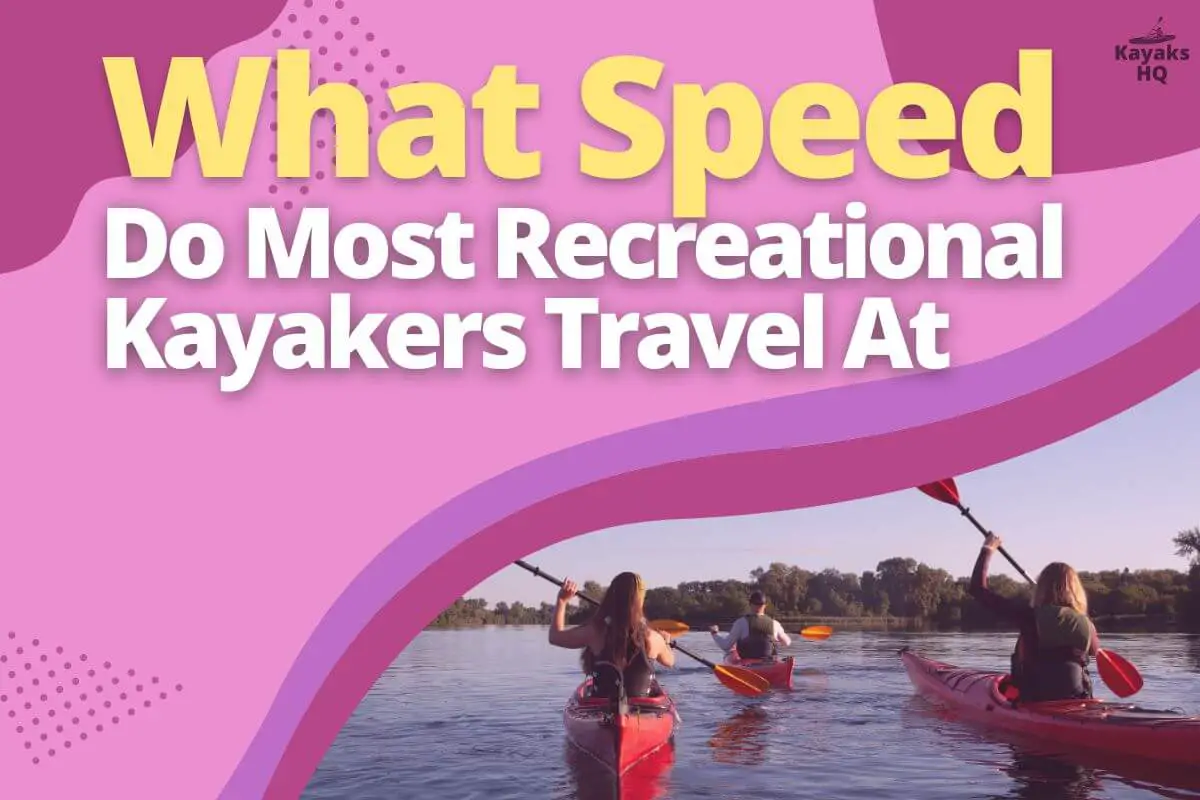Do you ever wonder what the speed of a recreational kayak is? Do you wonder how fast a kayaker can go? In this blog post, we’ll talk about the speed of a kayak and other fun facts.
Kayaking is a great way to spend time with family and friends. It allows you to get out on the water and enjoy nature. But have you ever wondered what the speed of a recreational kayak is? Or do you wonder how fast a kayak can go?
In this blog post, we’re going to talk about some fun facts about kayaking and then take a look at the top speeds that are possible for recreational kayaks.

Here’s The Answer To What Speed Do Most Recreational Kayakers Travel At
Most recreational kayakers paddle at about 2 to 3 knots or about 2 to 3 mph. This is a safe and relaxing pace for people new to kayaking.
When paddling flatwater, the average speed of recreational kayakers is between 3 and 4 miles per hour.
They also travel about the same speed as a jogger or slow bicyclist. So it’s slow-going compared to other paddle sports like whitewater kayaking, where the average speed is 6 to 10 mph.
What Are The Typical Recreational Kayak Speeds?

The average speed for recreational kayakers is about 2-3 miles per hour. This will vary depending on the person and their skill level, but it’s a good approximation of what you can expect to paddle at.
- If you’re just learning how to paddle, or if you’re trying out a new type of kayaks like an inflatable or sit-on-top, then your speed will be lower than someone who has a lot of experience and knows how to use their equipment well.
- Competitive paddlers shoot for 8-10 mph because they need the extra speed in order to win races against other competitors.
- The design of a kayak’s hull, waterline, and weather conditions all have an impact on its speed. Experienced kayakers can usually paddle at a higher speed than beginners.
However, there are some kayaks that can reach speeds of up to 10 miles per hour. The speed of a kayak also depends on the hull speed, which is the speed at which the water moves past the hull of the kayak.
How Do You Calculate Recreational Kayak Speed?
Many methods exist for determining the speed of your kayak. If you’re one of those competitive types, then this guide might be a bit much for you. But if you’d rather just enjoy the ride and have fun out on the water, then read on!
The simplest way is by using an app or watch with a built-in GPS tracker and speedometer. You will need to download an app or buy a watch that includes both features before setting off on your trip, though.
This method works best if it’s not too windy outside, as GPS signals can get lost in overhead clouds causing inaccurate readings.
As well as not being able to track your route by satellite signal alone when traveling through dense forest areas where tall trees may block out signals from above-ground sources altogether (such as satellites).
How Much Speed Is Recommended For A Recreational Kayak Trip?
Speed is measured in knots—the standard unit of speed in the nautical world. A knot equals one nautical mile per hour or approximately 1.15 miles per hour on land.
While individual kayakers have different preferences, it’s recommended that you paddle a kayak between 2 and 3.5 mph. At these speeds, you’ll be able to enjoy an easy-to-paddle yet stable kayak while still being able to enjoy the scenery.
How Can You Tell If Your Recreational Kayak Is Traveling Too Fast For The Water?

There are a few ways to tell if you are traveling too fast for the water.
- Your kayak will be difficult to steer and control. You may have trouble making turns, stopping, or even keeping the kayak upright.
- If your kayak is moving so fast that it starts skipping across waves (this happens when waves move faster than the boat), then you might want to slow down!
Do All Recreational Kayaks Have The Same Speed?
No, all recreational kayaks have different speeds. The speed of a kayak is determined by its length, width, and weight. An efficient paddle stroke will also help you to move faster through the water.
When you think of speed in a kayak, the first thing that comes to mind is how fast you can go. But there are three key factors that determine how fast a kayak will travel:
- The length of the boat
- The width of the boat
- And finally, the shape of your hull (how deep it is)
Recreational kayaks are designed for leisurely paddling and offer a stable, comfortable ride. They typically have a flat hull that makes them slower than other kayaks with more defined edges, such as whitewater or sea kayaks.
Are There Any Factors That Affect A Kayak’s Speed?

The answer is yes; there are a few factors that can affect how fast you go. First of all, the design of your kayak will play a part in how fast it travels. This includes its weight and hull material.
The heavier your kayak is, the slower it will go because more weight makes it harder to paddle through the water. However, if you have a wider and longer boat (or one with more volume), then you’ll be able to go faster because there’s more water displaced by your body as you move through it.
The other factor that affects speed is hull material: some materials, such as plastic or fiberglass, are lighter than others, like aluminum or carbon fiber. This means they will have better aerodynamics when traveling at high speeds across water.
However, these materials tend not to be very durable over time, so make sure not too much stress gets put onto them due to rough conditions!
Are All Kayaks The Same When It Comes To Speed?
No. All kayaks are not the same when it comes to speed, but there are several ways to make your kayak faster:
- The design of hull can be designed for speed or for stability. A faster hull will generally have less stability than a stable hull because it is narrower and has more volume in the bow and stern (front end, back end). However, if you want a fast-moving kayak but still want some stability, there are plenty of options out there with stability built into them.
- A shorter paddle means that you push fewer times per minute while paddling at a given stroke rate (the number of strokes per minute). Shorter paddles also weigh less which saves energy over time because less energy is required to lift them up every time they hit the water again after each stroke during normal paddling conditions on flat water surface areas where the wind does not play many roles.
What Is The Ideal Kayak Speed For Travelling Long Distances?
The best speed for kayaking depends on a number of factors. The conditions you are paddling in, your ability level and experience with paddling, the type of kayak you have, the paddling technique you use, and your physical fitness are all important considerations.
The ideal kayak speed will vary from person to person, depending on their experience level.
Beginners should aim for a slower pace until they become more familiar with their equipment and can perform basic strokes more efficiently before speeding up as they improve their skillset.
More advanced users may also choose to go faster because it is more fun or easier when traveling long distances over open water (see below).
How Can You Increase Your Kayaks Speed?

If you’re looking to increase your kayak speed, there are a few simple steps that can help.
Practice paddling in different conditions. While this might not seem like it will make much difference, it actually makes quite a lot of difference if you’re able to get used to paddling through waves or strong currents on your own time.
Get yourself a shorter kayak, and then go find some rapids! A longer kayak will make it harder for you to maneuver around obstacles that are in the water and could potentially slow down your progress downstream due to drag caused by friction against the water surface.
If you really want an edge over everyone else out there on the river today (and who doesn’t?), try investing in an actual professionally made watercraft like those made by Hurricane Kayaks; they have been known as one of America’s finest producers of kayaks since 1998!
Why Cant You Travel Faster Than Your Kayaks Maximum Speeds?
The answer is that there are many factors that limit a kayaker’s speed or maximum kayak speed. These include:
- Skill and experience of the paddler.
- Quality of the kayak (its design and performance).
- Water conditions (the wind and weather).
- Weight of the boat (and its contents).
- The fitness level of the paddler.
- The fitness level of the kayak.
Conclusion
The bottom line is that what speed most recreational kayakers travel at depends on several factors such as water conditions, the length of the boat, and the skill level.
The best way to know what speed you are traveling at is to use a GPS. A kayaking trip should be fun and relaxing, so don’t stress about how fast you should go!
Instead, focus more on enjoying time spent with friends or family while exploring the great outdoors from a unique perspective that only kayaking can provide!
If you are interested in reading more about recreational kayaking, then be sure to check out our website for more information on the sport. Thanks for reading our blog post on what speed most recreational kayakers travel at. Be sure to check back for more!

